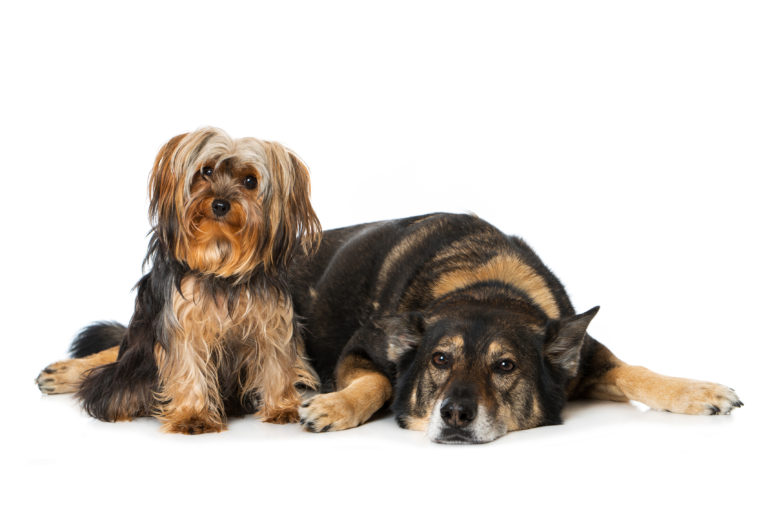In contrast to rabbits or parrots, dogs don't necessarily need a fellow canine companion, because you as the owner are their most important contact. Nevertheless, many dog lovers fancy a second or third dog. The advantages are obvious: your dog always has someone to play with, you can easily take at least two well-trained dogs on walks and feeding and grooming merely involve cleaning up.
Risks in households with multiple dogs
However, bringing another dog into your home certainly carries some risks. For instance, potential attachment problems that are already present can be intensified, because two dogs initially form their pack based on fellow four-legged creatures, so they focus very strongly on each other. By doing so, they of course learn from each other too – and not just in a positive sense. If you haven’t thoroughly trained your first dog and hope that a second dog will wear out the cheeky old faithful and thereby make training easier, be warned that this hope will probably go unfulfilled. On the contrary, the bad habits could double in future. You should only consider a second dog if your first one has impeccable basic obedience and is well socialised. A second dog can muddle things up not just in terms of training: can the previous dog sitter take care of another dog or can you take two with you on your travels? Do you have enough space in the car? Not least, a second dog of the same size means almost double the costs for food, toys and veterinary bills.
Birds of a feather flock together?
When searching for the right partner for your dog, the same principles apply as with people and the most important thing is that the chemistry is right. By choosing sensibly, the chances of forming a dream team are increased. Bear in mind that a new puppy will focus strongly on your first dog. This means that if your first dog is rather anxious, this will be transmitted to the second dog. However, in some cases the first dog can learn from new housemates, for instance, if a very sociable and self-confident dog enters the home and gives the old faithful a sense of security. Basically, both dogs should be similar in terms of temperament – this is the best way for them to interact. When rehoming adult “second dogs”, some animal protection organisations offer to initially just put the potential second dog into care. If the chemistry between the dogs is there, it will have found its new forever home. Even when a puppy moves in, you should let the breeder advise you thoroughly as to whether the breed and character are the best possible fit for your dog. New puppies entering the home usually subordinate easily – nevertheless, if in doubt don’t opt for the largest ruffian in the litter when looking for your second dog.
If you want a second dog, sex of course also plays a role: if you keep males and females, you have to physically separate them completely for a few days twice a year when they are in heat or get one of the two castrated or neutered. In this respect, it’s easier to keep dogs of the same sex if they are well socialised, although it should be noted that males and females often just get on better. Additionally, for instance, a new young male entering the home mainly accepts the higher rank of an older female who has been there a long time, so the hierarchy is clear from the outset.
The second dog moves in: grand welcome?
Not all dogs receive a new canine housemate with a joyful wag of the tail: many see it as an intruder in their territory and seem to hope that the unwanted guest will soon disappear. Hence, you should absolutely continue to make your old faithful the centre of attention: greet it first, feed it first and let it keep its toys and rest place. In this way, it won’t feel any threat to its position. Indicate to visitors curious about the new canine arrival to greet the long-standing dog first before cuddling the puppy. In any case, you as a dog owner should accept the existing hierarchy between the dogs, because conflict will commence if you favour the lower-ranking dog out of sympathy.
Training is also time-consuming at the beginning, starting with walks. Under no circumstances should you take both dogs out at the same time straight away. Your new housemate should first frequently get out and about just with you in order to learn basic obedience and attachment from the ground up. Only when progress is evident can you take both dogs out together. Your first dog should of course not be ignored during training to prevent the time commitment at the beginning from almost doubling. When training several dogs, you can use the same signals for “sit” and “stay” etc. without any problems. However, practise these with just one dog at a time at the start until they are carried out confidently, and use names and eye contact as a means of forming a connection. Ultimately you can practise these exercises with two or three dogs.
We wish you lots of fun together with your canine pack!
